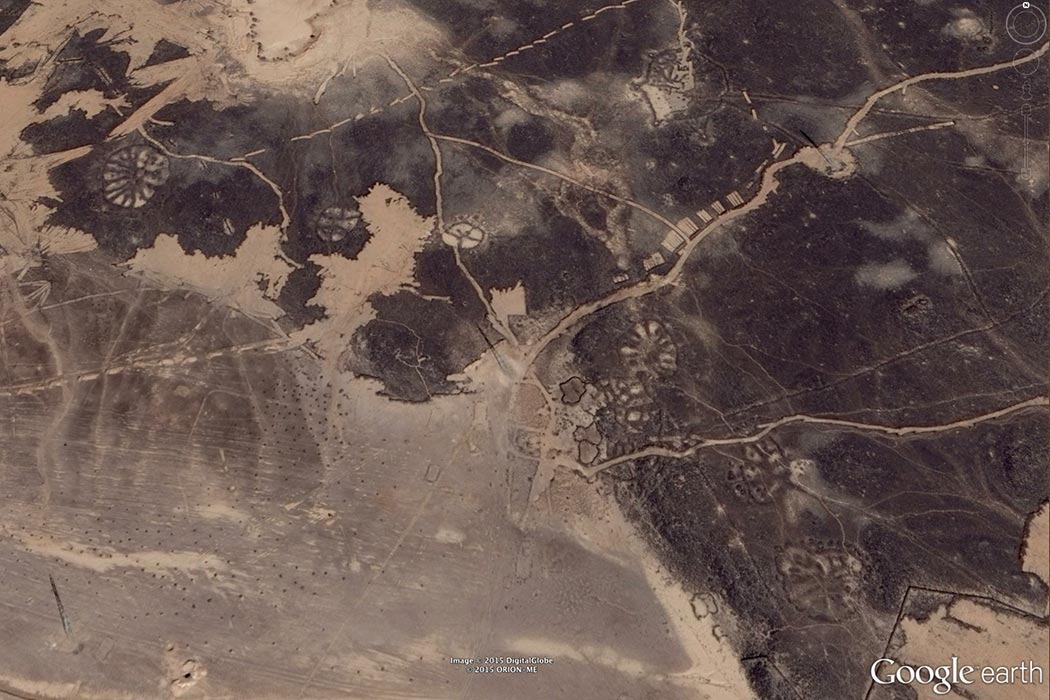Most of us have probably heard of the famous Nazca Lines of Peru, but did you realize that equally strange shapes have been cut into the barren rocks of the Arabian desert? The Arabian geoglyphs come in three main varieties: spoked wheels, long narrow shapes with a bulb at the end called kites (due to their resemblance to the flying toys), and bulls-eyes. The age and purpose of the lines have long been unclear, but new research is starting to expand our understanding. Like the Nazca Lines, the Arabian works are more easily discernible from the sky than they are on the ground. Though they are much simpler than the Nazca lines, they cover a much wider area: spanning the entire Arabian peninsula from Yemen to Jordan and the Sinai.
The Arabian geoglyphs, known to local Bedouin tribes as “the works of the old men,” were first discovered by RAF pilot Percy Maitland in 1927. Since they’re difficult to observe on the ground, most of the early accounts were given by pilots. Writing in 1929, geographer O.G.S. Crawford provided numerous examples. His accompanying photographs, showing the “bulls-eye” design, are beautiful, especially considering that aerial photography was in its infancy at the time. The purpose of the trip was to draw attention to the new field of aerial archaeology, a technique popularized by the well-known aviator Charles Lindbergh.
Crawford compared the landscape in which these geoglyphs were found to Killarney, a medium-sized town in southern Ireland. As for his research, he was fascinated by the age of the earth drawings, but without access to any scientific dating techniques, he could only anecdotally assume them to be very old. For example, he deemed an abundance of flint arrowheads near the sites as “neolithic.”
Equally challenging to Crawford and subsequent observers was determining their purpose. For some, like the the spoked wheels and bulls-eyes, the intent remains unknown. But for the kites, recent scholarship seems to have found an answer. They are the eroded bases of temporary walls erected out of desert basalt. The kite’s tails were a kind of chute through which hunters channeled gazelles and other game. In other words, these geoglyphs could be understood as a form of technology that helped trap and kill animals for food.
Recent advances in hi-tech imaging has also enabled researchers to finally determine the age of these geometric shapes: an astonishing 8,500 years old. That makes them 6,000 years older than the Nazca lines of Peru.







